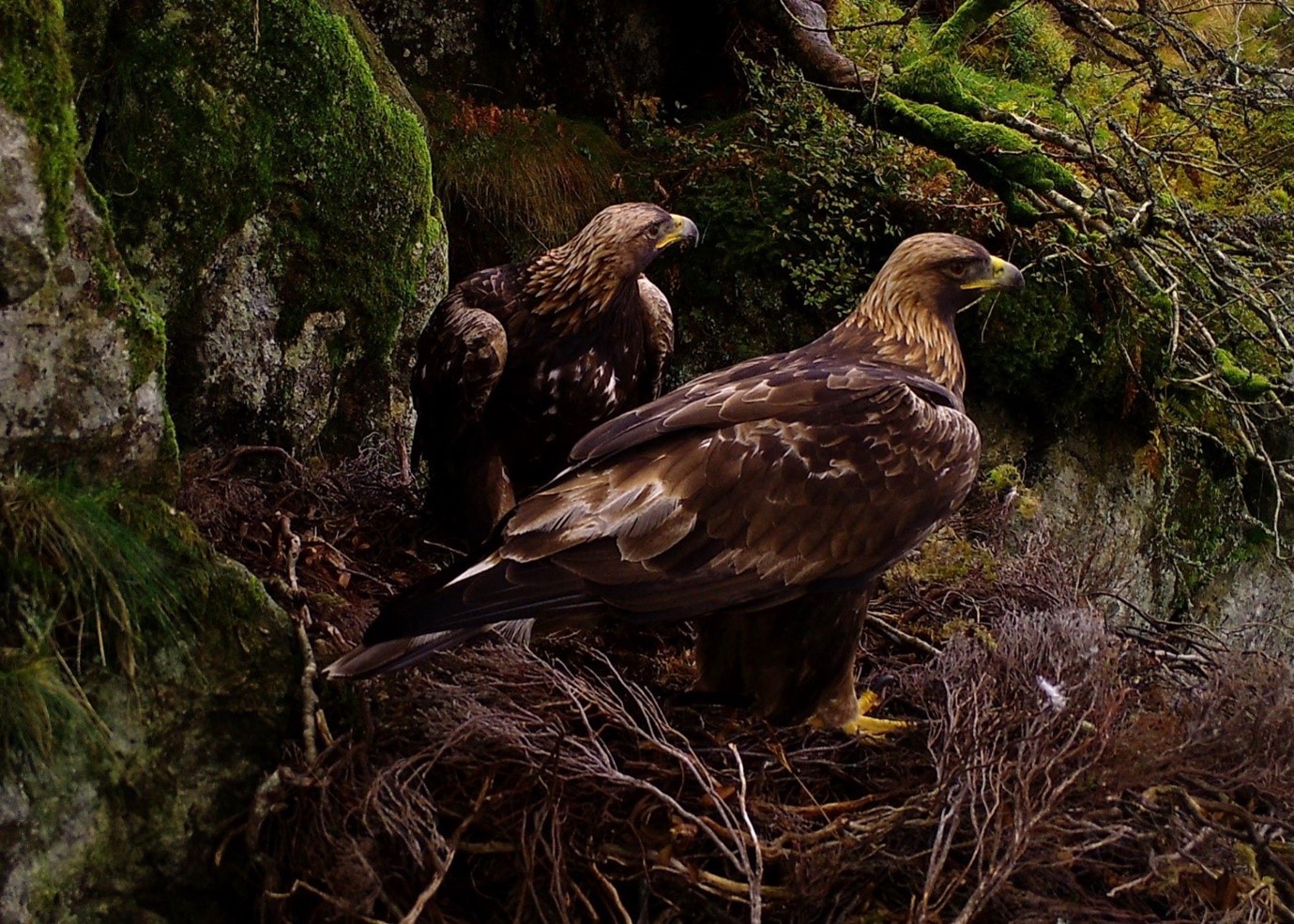Breeding success for raptors on East Cairngorms Moorland Partnership estates

Breeding success for raptors on East Cairngorms Moorland Partnership estates
Published on behalf of the East Cairngorms Moorland Partnership
Moorland raptors are doing well in the East Cairngorms Moorland Partnership area of the Cairngorms National Park.
The most recent figures show a stable population of at least 12 breeding pairs of golden eagles in 2023, with one or more pairs recorded on every estate in the partnership area. Three pairs successfully hatched young in 2023, each rearing twins.
Hatching success throughout the wider north-east Scotland golden eagle population was lower than usual in 2023, with natural causes and poor weather early in the season contributing to this. However, good food availability, together with fine weather for hunting by provisioning adults later in the spring, led to a record number of twin chicks fledging.
Nine breeding pairs of peregrine falcon were confirmed across the partnership area last year, of which eight successfully fledged chicks. Over the next couple of years, the Cairngorms Raptor Project will expand peregrine monitoring across the National Park to better understand their current distribution and extend coverage to sites that have not been surveyed recently to establish whether they are occupied by peregrines or not.
Isla Graham, Raptor Conservation Officer at Cairngorms National Park Authority, said: “As part of the Cairngorms Raptor Project we will be building on the work of the East Cairngorms Moorland Partnership, focusing our efforts on peregrine monitoring, to try to establish the size of the population and its conservation status across the National Park.”
There were 11 confirmed hen harrier breeding attempts in the Partnership area, of which eight were successful and reared chicks. The confirmed nest sites were all on Mar Lodge Estate, owned by the National Trust for Scotland, where breeding activity has increased dramatically since the first nesting attempt in living memory in 2016.
David Frew, Head of Mar Lodge Estate, said: “We are delighted to see hen harriers continuing to breed and to thrive on the estate following their return. High numbers of voles helped to ensure that 2023 was the most productive year on record for this important raptor species.”
Hen harriers have also been observed foraging on all the other estates within the East Cairngorms Moorland Partnership area, with pairs seen in suitable nesting habitat and adults seen carrying food items. These observations suggest up to four additional breeding attempts were likely on three different estates. Targeted survey work in 2024 will aim to establish whether hen harriers are successfully breeding on these estates.
Richard Gledson, Resident Factor, Balmoral Estates commented: “It is very encouraging to see this breeding success for some of our important moorland raptors and the commitment of everyone involved in the East Cairngorms Moorland Partnership to ensuring that these species continue to thrive. In the last two years we have a third pair nesting on Balmoral at a new nest site (pictured).”
The East Cairngorms Moorland Partnership involves six neighbouring estates in the eastern Cairngorms – along with the Cairngorms National Park Authority. It aims to better coordinate the delivery of public benefits alongside private objectives, enhancing habitat diversity, including woodland and scrub expansion and peatland restoration, encouraging diverse wildlife populations and the conservation of priority species, as well as generating a better understanding of moorland management.
The Cairngorms Raptor Project is a three-year project working with partners and stakeholders to deliver a programme of work to secure the future of species, in particular hen harrier, golden eagle, peregrine and merlin, within the National Park. The project aims to consolidate data and develop monitoring to inform a robust, evidence base of current raptor populations, direct targeted conservation measures to support and increase raptor numbers and raise awareness about raptors and their importance.
Latest from the National Park
Update on wildfire situation
Convener Sandy Bremner and Chief Executive Grant Moir have given an update on the ongoing wildfire situation.
Statement on wildfires
An update from Grant Moir, Chief Executive of the Cairngorms National Park Authority, on the ongoing wildfires in Moray and Highland.
New Nethy houses get green light
Meeting in Ballater, the Planning Committee approved applications for a development of 35 houses in Nethy Bridge and a floodplain restoration scheme on the River Dee.




